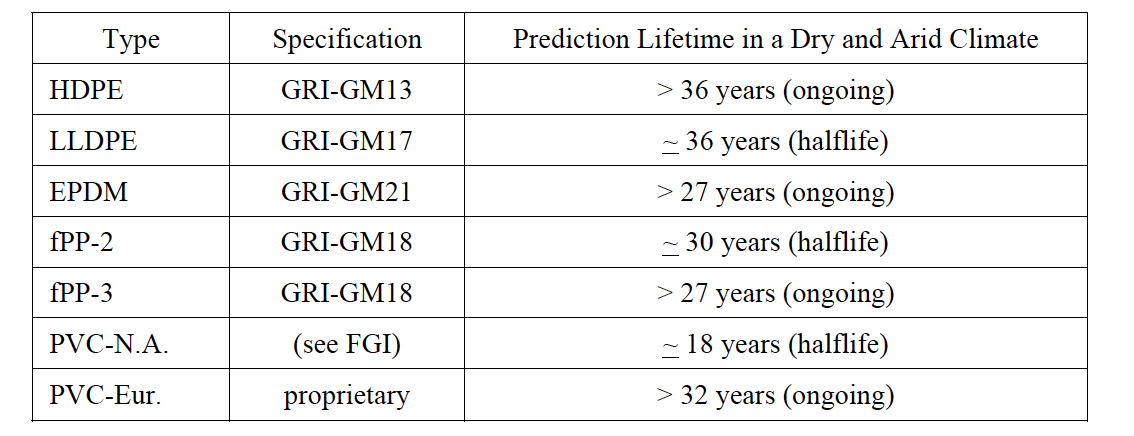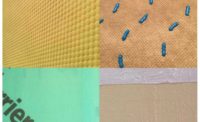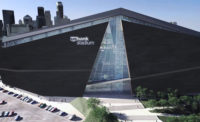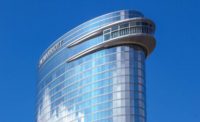With the availability of buildable land declining in many high-demand markets, the pressure to build on sub-optimal lots, including brownfields, is intensifying. This makes the requirement to install a robust, continuous waterproofing and gas membrane between the ground and the structure more critical than ever.
Dual threats: water and methane
Water intrusion is a perennial concern due to its impact on the long-term structural integrity of concrete foundations and walls, and of the building itself. Concrete is vulnerable to groundwater and chemical contaminants in the soil. These can leach into the pores and cracks of the concrete and degrade its integrity, causing spalling and corroding the reinforcing steel. Moisture migrating into the building can also degrade structural elements over time and lead to mold and other hazards to occupants’ health.
In addition, there is growing concern regarding the intrusion of methane and other gases and chemicals, such as trichloroethylene (TCE) and perchloroethylene (PCE), from the soil. Methane, a hydrocarbon (CH4), is a potent greenhouse gas (GHG) and can have serious health implications for building occupants. In some jurisdictions, this concern is driving regulations requiring proactive mitigation. In the U.S., California is leading the trend with methane mitigation standards issued by the Los Angeles Department of Building and Safety (LADBS). To comply with these standards, any methane barrier must have Los Angeles Research Report (LARR) approval, certifying that it meets testing requirements defined by the city.
Essential barrier requirements
Meeting these challenges demands a pre-applied or post-applied membrane that meets a host of functional and performance requirements. It must be:
- Continuous, preventing any gaps that could allow water or gas intrusion
- Fully bonded with the concrete, preventing voids that could allow water or gas migration between the barrier and the substrate
- Durable, with the ability to stand up to the elements for the life of the structure
- Easy to install, ensuring correct application with typical installer skills and equipment
- Proven, with a track record of performance under real-world conditions
- Backed by a company recognized for technical innovation and product support excellence
GCP has two proven solutions that meet these requirements for both pre-applied and post-applied applications: PREPRUFE® 300R Plus and BITUTHENE® 8000.
Pre-applied barrier: PREPRUFE® 300R Plus
PREPRUFE® 300R Plus is a composite sheet membrane comprised of a thick high-density polyethylene (HDPE) film, pressure-sensitive adhesive, and weather-resistant protective coating. As a pre-applied membrane, it is installed directly against the formwork or other soil retaining system before the reinforcement is placed. Concrete is then poured directly onto the membrane, forming a permanent, continuous bond with the PREPRUFE® 300R Plus membrane. The membrane’s waterproofing system does not require water activation, confining pressure, or chemical hydration to bond with the concrete.
Once installed on the formwork, the PREPRUFE® 300R Plus membrane can be trafficked immediately, allowing placement of reinforcement using standard concrete spacers. The installed membrane is unaffected by typical jobsite conditions, including wet or freeze/thaw conditions.
Post-applied barrier: BITUTHENE® 8000
BITUTHENE® 8000 is a self-adhesive, cold-applied sheet membrane for above- and below-ground applications. It can be used either horizontally or vertically. BITUTHENE® 8000 features a thick, HDPE composite carrier film. BITUTHENE® technology has been proven in more than 50 years of use in the field across countless projects, under a wide range of conditions.
Performance advantages of HDPE and HDPE composites at the right thickness
Key to the long-term performance of PREPRUFE® 300R Plus and BITUTHENE® 8000 is the optimal thickness of their HDPE and HDPE composite carrier film material, respectively. This thermoplastic polymer has distinct performance characteristics that make it ideal for use as a waterproofing and gas barrier membrane.
HDPE is an inert material that resists degradation over time. Some waterproofing membranes are made of materials that have higher levels of degradation due to their polymer structures. These include linear low density polyethylene (LLDPE), PVC (polyvinyl chloride), EPDM (ethylene propylene diene polymer), and CSPE (chlorosulphonated polyethylene). LLPDE, PVC, and EPDM are at particular risk of oxidation, while CSPE suffers from dehydrochlorination. HDPE has greater resistance to oxidation, hydrolysis, and stress than these other materials, making it an ideal choice for use as a geomembrane.
Independent scientific testing[1] has shown that HDPE offers longer life than other commonly used membrane materials in both unexposed and exposed applications (see Figures 1 and 2).

Figure 1: Total lifetime prediction of HDPE (non-exposed) at various field temperatures.
Stage “B” is induction time; Stage “C” is the time for 50% change in mechanical properties.

Figure 2: Exposed lifetime prediction results of selected geomembranes to date (2011).
Chemical permeation performance
Chlorinated solvents, including tetrachloroethylene (PCE) and trichloroethylene (TCE), are among the most widespread groundwater and surface water contaminants in the U.S. This increases the likelihood that waterproofing membranes will be exposed to these and other chemical contaminants. The permeation resistance of PREPRUFE® 300R Plus and BITUTHENE® 8000 to volatile organics has been tested in comparison with a non-HDPE membranes.[2]
Testing was conducted using the ASTM F739 standard, immersing the membranes in a solution of reagent-grade TCE and distilled water in an open-loop setup, using gas chromatography to measure chemical permeation. The HDPE membrane corresponding to PREPRUFE® 300R Plus and BITUTHENE® 8000 exhibited dramatically superior permeability performance at all temperatures tested (see Figure 3).
Membrane |
Temperature (°C) |
Steady-state permeation rate (µg/cm2/min) |
Normalized breakthrough detection time (hrs) |
|
A (HDPE) |
25 |
N/A |
No detection (stopped at 21.75 hours) |
40 |
6.7 |
8.5 |
|
50 |
9.6 |
4.5 |
|
60 |
20.3 |
2.25 |
|
|
B (non-HDPE) |
25 |
16.8 |
0.25 |
40 |
19.2 |
2.25 |
|
50 |
26.1 |
1.25 |
|
60 |
50.8 |
0.75 |
Figure 3: Results of permeability testing of HDPE membrane and non-HDPE membrane. The HDPE membrane showed much lower permeation rate and much longer breakthrough detection time, suggesting greater resistance to chemical intrusion.
Adhesion performance and lateral migration testing
Continuous adhesion to the concrete slab or wall is critical to prevent lateral migration of water or gas between the membrane and the concrete. Both PREPRUFE® 300R and BITUTHENE® 8000 have design features that ensure continuous bonding over the life of the structure.
PREPRUFE® 300R features GCP’s patented Advanced Bond Technology™. Unlike other pre-applied membranes that rely on mechanical or chemical bonding, PREPRUFE® 300R forms an intimate, continuous bond with the concrete poured on or against it.
In comparison testing against competing pre-applied membranes, PREPRUFE® showed significantly higher adhesive performance. It demonstrated 10 pounds per linear inch (pli) bond strength, versus 7 and 3 for the competitive membranes.3 Using the ASTM D5385 test standard (hydrostatic head resistance), the PREPRUFE® membrane resisted lateral water migration at 100 pounds per square inch (psi) pressure, while the competitive membranes failed at 45 psi and 2 psi, respectively.[3]
PREPRUFE® membranes have been tested under laboratory conditions to measure resistance to lateral water migration over the long term. The test method was a modified version of ASTM D5385, the Standard Test Method for Hydrostatic Pressure Resistance, and the tests were supervised and validated by representatives of Association Française des Tunnels et de L’Espace Souterrain (AFTES) or Centre d’Études Techniques et de l’Équipement (CETE) Lab. Test specimens were prepared by casting concrete against membrane with a 30mm x 30mm section of membrane removed to expose the concrete. The specimens were immersed in water and periodically subjected to hydrostatic head pressure with water to detect any leakage which would indicate lateral migration. Testing occurred over a period of three years and results collected (see Figure 4) demonstrating the long-term adhesion and durability of the PREPRUFE® membrane.
Immersion time |
Pressure / time |
Result |
|
1 month |
300Kpa (43.5 psi) / 10 mins |
No leakage |
500 Kpa (72.5 psi) / 10 mins |
No leakage |
|
700 Kpa (101.5 psi) / 60 mins |
No leakage |
|
|
6 months |
300Kpa (43.5 psi) / 10 mins |
No leakage |
500 Kpa (72.5 psi) / 10 mins |
No leakage |
|
700 Kpa (101.5 psi) / 60 mins |
No leakage |
|
900 Kpa (130.5 psi) / 24 hours |
No leakage |
|
|
11 months |
300Kpa (43.5 psi) / 10 mins |
No leakage |
500 Kpa (72.5 psi) / 10 mins |
No leakage |
|
700 Kpa (101.5 psi) / 60 mins |
No leakage |
|
|
21 months |
300Kpa (43.5 psi) / 10 mins |
No leakage |
500 Kpa (72.5 psi) / 10 mins |
No leakage |
|
600 Kpa (87 psi) / 90 mins |
No leakage |
|
|
27 months |
300Kpa (43.5 psi) / 10 mins |
No leakage |
500 Kpa (72.5 psi) / 10 mins |
No leakage |
|
700 Kpa (101.5 psi) / 60 mins |
No leakage |
|
|
31 months |
300Kpa (43.5 psi) / 10 mins |
No leakage |
500 Kpa (72.5 psi) / 10 mins |
No leakage |
|
700 Kpa (101.5 psi) / 60 mins |
No leakage |
|
36 months |
700 Kpa (101.5 psi) / 60 mins |
No leakage |
Figure 4: Results of laboratory testing of PREPRUFE® membrane to measure lateral water migration under various pressures over time.
As a post-applied membrane, BITUTHENE® 8000 also features our Advanced Bond Technology™. This pressure-sensitive adhesive (PSA) that bonds aggressively when applied to concrete that has been properly primed. It has been tested to withstand more than 700Kpa (70 meters head of water) or ~99 psi.
Based on these test results, PREPRUFE® 300R and BITUTHENE® 8000 offer the adhesive performance required to provide a continuous and permanent bond with structural concrete that prevents water intrusion for decades, under even the harshest hydrostatic conditions.
Gas resistance
As noted previously, preventing intrusion of methane and other harmful gases, both from natural and industrial sources, is a priority for both regulatory compliance and occupant health. The HDPE/ HDPE composite carrier used in PREPRUFE® 300R and BITUTHENE® 8000, respectively, is unaffected by gas or chemicals, making them ideal as a membrane to prevent methane intrusion. Both PREPRUFE® 300R and BITUTHENE® 8000 are certified by the British Board of Agrément (BBA) as gas-resistant barriers.
Independent assessments have certified PREPRUFE® 300R to provide gas protection in excess of the standard membrane requirements in BRE Reports 211 (radon) and 212 (methane and carbon dioxide).
In testing at the University of London, BITUTHENE® 8000 was shown to have methane permeability of 3.89mL per square meter per day—far below the BRE recommended minimum standard of 360mL per square meter per day.
Ease of application
Proper installation is crucial to ensure the long-term performance of a water or gas membrane. Complex or unclear processes increase the chances of installation errors that can lead to leaks. PREPRUFE® 300R and BITUTHENE® 8000 are thoughtfully designed for ease of installation.
PREPRUFE® 300 features a kick-out roll for simple installation against concrete forms. ZipLap™ selvedge seams allow for an adhesive-to-adhesive bond at membrane sheet overlaps to create a continuous membrane, without the need for heat, power or specialized equipment. The membrane can be installed to permanent formwork, allowing maximum use of confined sites. Detailing watertight penetrations is easy with BITUTHENE® liquid membrane.
BITUTHENE® 8000 is easy to apply by simply peeling back the protective release paper and applying to the properly prepared concrete surface. Surfaces (except those below ground-bearing slabs) should be primed with a single coat of the specified primer. Installation can be performed over a wide temperature window—from -5°C to +35°C (a hot climate variant is rated to 55°C)—and is tolerant of damp surface, helping avoid delays. The exposed surface is reflective, reducing solar heat absorption by more than 20% while the membrane is exposed, preventing degradation due to UV rays. Printed lines help ensure the correct overlap (minimum 50mm) and providing a continuous membrane when well rolled using a lap roller with firm pressure. Detailing can be performed using cut sections of BITUTHENE® 8000 or BITUTHENE® liquid membrane.
While BITUTHENE® 8000 is extremely durable, if a puncture occurs during installation, it can be easily repaired by patching and firmly rolling an oversized patch of membrane over the puncture.
PREPRUFE® 300R and BITUTHENE® 8000 have been thoroughly tested for compatibility, ensuring reliable adhesion from sheet to sheet and around detailed penetrations. This is critical to achieve comprehensive, continuous protection for the entire waterproofed structure.
Backed by a global industry leader
GCP has been a leading innovator in construction waterproofing solutions for more than 50 years. Our below-grade waterproofing solutions protect commercial and residential buildings and infrastructure projects worldwide, in some of the harshest climates on Earth. Our BITUTHENE® products have been a recognized industry standard for post-applied waterproofing for decades. Our PREPRUFE® product line has led the pre-applied waterproofing segment since its introduction in 1990.
A key advantage of these products is the R&D and testing that has led to their innovative performance features. GCP consistently goes beyond industry standards when testing product performance. These testing enhancements are often later adopted as industry standards. As an early innovator in the waterproofing segment, GCP was instrumental in helping develop standards used across the industry to measure water- and gas-proofing performance.
GCP stands behind its waterproofing products with global technical support and expertise. Our field support specialists are available to answer your questions and provide guidance to ensure you achieve optimal results.
Summary
GCP helps building engineers, architects and contractors meet the challenges of today’s construction site realities with advanced solutions for above- and below-grade waterproofing and methane barriers. PREPRUFE® 300R Plus pre-applied and BITUTHENE® 8000 post-applied membranes have been designed and tested—both in the laboratory and in the field over decades—to provide the highest levels of:
- Adhesion performance and continuity
- Long-term durability and integrity
- Resistance to water migration
- Resistance to various gas intrusion including TCE/PCE/BTEX
- Ease of installation
PREPRUFE® 300R Plus and BITUTHENE® 8000 offer two compelling solutions for mitigating risk, ensuring regulatory compliance and protecting the health of building occupants, today and into the future.
To learn more about PREPRUFE® 300R Plus and BITUTHENE® 8000, contact GCP today.
References
[1] Koerner RM, Hsuan YG, Koerner GR, Geomembrane Lifetime Prediction: Unexposed and Exposed Conditions, Geosynthetic Institute, February 8, 2011.
[2] Cao X, Anderson ND, Evaluate Chemical Permeation Performance of Polymeric Below-Grade Waterproofing Membranes, GCP Applied Technologies.
[3] High Performance PSA in Sheet Membrane in Water Protection, W.R. Grace (2013).
.jpg?1653343601)


